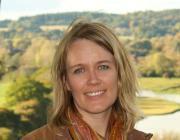Citation:
Abstract:
Light-use efficiency (LUE) is the ability of vegetated canopies to use light for photosynthesis. Together with remote sensing estimates of canopy cover and meteorological inputs, LUE provides a physical basis for scaling carbon uptake processes from the stand to the global scale. A better understanding of the factors that control LUE will result in improved global estimates of carbon uptake from the terrestrial biosphere. To examine factors that control variability in LUE in stands of different ages during dry and wet conditions, we measured LUE in a chronosequence of four jack pine stands (recent clearcut (age 1–3), regenerating (age 8–9), immature (age 29–30) and mature (∼90 years old)) during one normal (2002), one very dry (2003) and two very wet (2004, 2005) growing seasons in Saskatchewan, Canada. Cumulative CO2 fluxes decreased significantly at all sites during the drought year of 2003, as did mean LUE. Canopy foliage at the recently regenerating jack pine site increased by 19% between 2002 and 2003. Foliage growth rate was reduced by 6% between 2003 and 2004, and foliage biomass decreased by 6% from 2004 to 2005. Over the four years studied, LUE was greatest at the mature jack pine site and lower, but similar, at the other three sites. Mean growing-season LUE varied with mean soil water content at each site, except at that of the newly regenerating stand where soil water had little influence. Mean daily vapor pressure deficit typically had the greatest influence on variability in LUE at all sites. Diffuse versus direct radiation also had significant but varying effects on LUE in jack pine stands of different ages.


